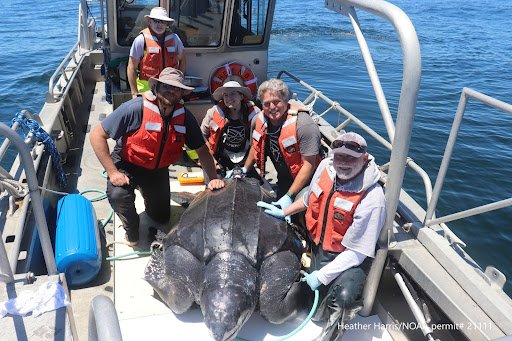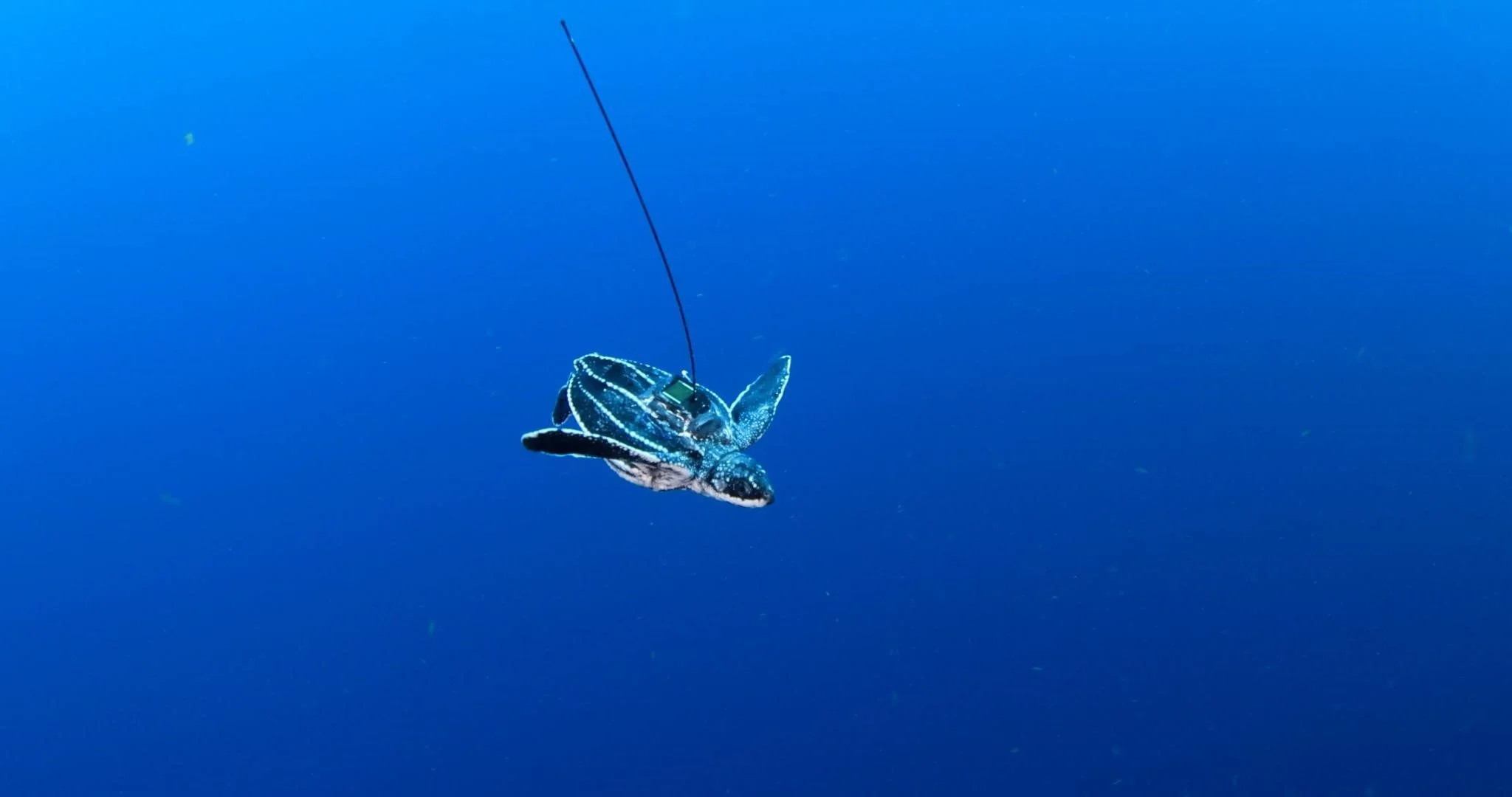Emeline McMann-Chapman is a recent graduate with a BS in Biological Sciences and a minor in Environmental Studies from California Polytechnic State University, San Luis Obispo. As an Upwell Research Assistant, she assists with collection and analysis of stranding data on cold-stunned sea turtles on the Pacific coast. Emeline is documenting the temporal and spatial trends of cold-stunning events and compiling patient medical data to better understand their underlying health conditions. She recently had the opportunity to assist Upwell and NOAA’s leatherback tagging team in Monterey Bay.
I recently found myself running to the side of the Research Vessel Sheila B in Monterey Bay to “lose my lunch”, if you catch my drift. Our crew of six was on a mission to find, tag, and assess the health of West Pacific leatherback sea turtles. These turtles travel across the Pacific Ocean to feast on the abundant sea jellies in the California Current typically between the months of May and December. Unfortunately, West Pacific leatherbacks are critically endangered; over the past 50 years their population has declined by more than 80%. I was heading out with a collaborative team of researchers from Upwell and NOAA that monitor leatherbacks in order to learn more about these modern dinosaurs of the ocean so we can improve conservation efforts and mitigate the threats they face at sea.
Thirty minutes before my bout of sea sickness, I had excitedly stared at the water catching glimpses of the leatherback sea turtle’s favorite foods: moon jellies and sea nettles. Shortly after my stomach started churning and my hands became clammy, our captain got an alert on the radio: a leatherback sea turtle had been spotted in the bay! We quickly changed course and arrived to find a turtle surrounded by whale watching boats; we would have to wait.
One by one, the whale watchers headed off in other directions until we were the only boat left. As we approached, the shape of the Leatherback sea turtle changed from a small floating orb to a massive, powerful creature. Its head was at least the size of a basketball and its shell alone was longer than my height (5’8”).
It is no easy task to get a half-ton turtle onto a boat built for six people, but this crew knew what they were doing. NOAA’s Scott Benson and Garrett Lemons acted quickly with a net. We let down the boat’s specially designed ramp, and brought the amazing animal on board.
Photo by Heather Harris
Time passed incredibly quickly, broken up shouts of “BREATH!” As a research assistant for Upwell Wildlife Veterinarian Dr. Heather Harris, it was my job to make note of the timing for every turtle breath along with its weight, heart rate, body temperature, tag numbers, morphometric measurements, and basically any other number yelled aloud. Adrenaline pumped through my veins, my nausea subsiding.
I found a place on the sidelines to take data and douse the turtle with sea water to keep it cool. Scott, Garrett, and Upwell’s Executive Director Dr. George Shillinger worked quickly to tag the turtle and read out its ID numbers. Heather monitored the turtle and took ultrasound images and biological samples. Captain John Douglas operated the vessel and alerted approaching whale watching boats to remain out of the area. This experienced crew worked well together and I was proud to be helping them.
We released the giant, dinosaurian reptile back into Monterey Bay and dubbed her “July” for the month we encountered her. July was the earliest leatherback ever tagged in the California Current foraging grounds!
Finding leatherback sea turtles in the open ocean is like finding needles in a haystack. It requires aerial and boat monitoring teams—and helpful alerts from other eyes on the water, like the whale watching community—plus a bit of luck. Basking in the afterglow of our encounter with July, I curled up in a corner. I fell asleep with a buoy as a pillow, sleeping away my sea sickness until we were almost back to the dock. I must admit that one of the most important things I learned on the boat that day was that Meclizine tablets are to be chewed, not swallowed whole. Science in the field is a blast, but it sure is exhausting!





